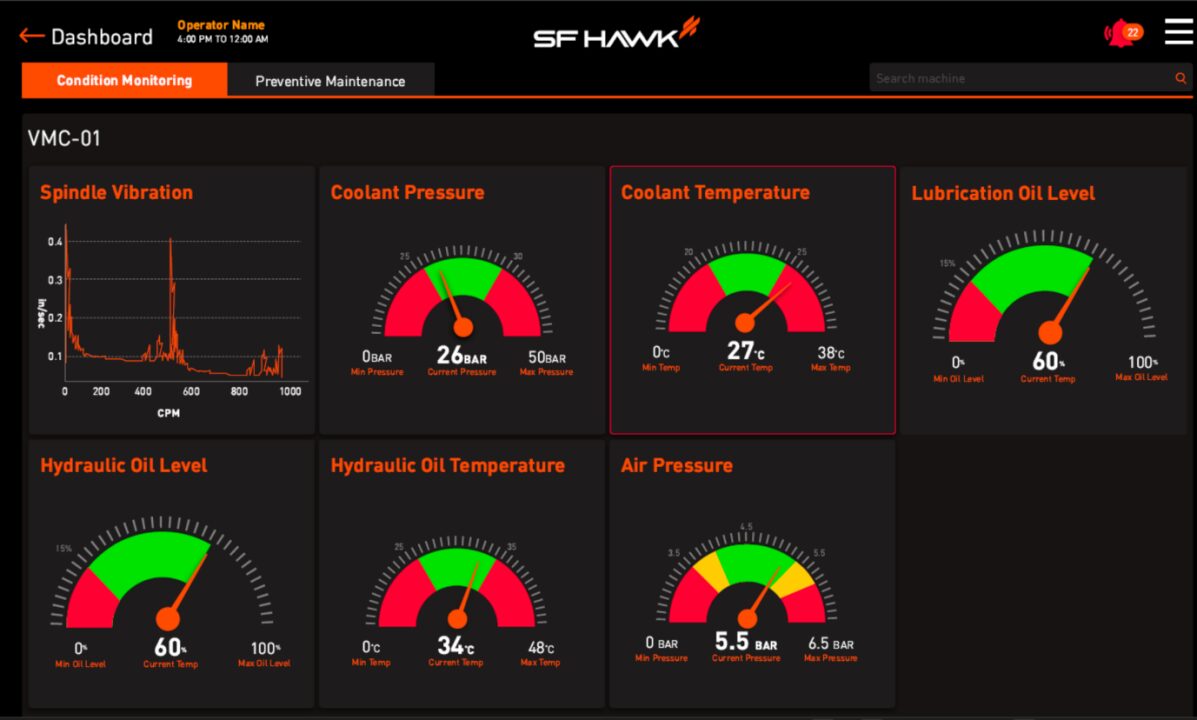Introducing Industry 4.0
The term “Industry 4.0” refers to the many ways in which manufacturing companies (both OEM players and their suppliers) can improve productivity, quality, cost-efficiency and flexibility of their production facilities on the basis of actionable insights harvested from analysis of real-time data. “Smart factories” with cyber-physical systems and high levels of “intelligent automation” are a key element of Industry 4.0; adoption is expected to transform industrial value chains worldwide.
Another key premise of Industry 4.0 is that actions must be triggered by real-time data, relying less on predictive models or human judgment. Put differently, supervisors and factory managers will need to rely more on data points gathered from machines instead of relying on an experienced shop floor worker saying “It’s time to replace this tool because it looks worn out” or “The toolhead has run for X hours, which is when the manufacturer recommends replacement”.
Addressing people aspects is crucial to realizing the benefits of Industry 4.0
A manufacturing enterprise adopting Industry 4.0 well will derive substantial benefits. But as in the case of most transformation programs, a lot of attention is paid to the “hard” aspects- investments in shop floor automation, process redesign, information technology etc. But what will be crucial is how well companies handle the “soft aspects”. Technology can give your business data and insights. But what you do with those insights is what will make a real difference- and that ultimately depends on your people. This is an important point to keep in mind for companies in the manufacturing sector on journeys to adopt “Industry 4.0” ways of thinking and doing.
If the mindset of workers, supervisors and factory managers is not changed, they will continue to work in old ways- and that will lead to sub-optimal results. Imagine printing out e-mails, dictating responses and having a secretary type it back as an e-mail! (Yes, we all know people who actually did this 25 years ago, but it is unthinkable in today’s context).
How successful your enterprise will be in harnessing achieving the transformative potential of Industry 4.0 will depend significantly on how well you implement these “people actions” in your shop floor or factory:
- Starting the process of mindset change before implementation begins; explaining why and how this is a better way of working and is not meant to cut down staff.
- Train operators on the new ways of working; explain that the way they operate the tool or machine will not change, but that they will need to pay attention to alerts triggered by the solution.
- Explain that the data will supplement their own judgment- rather than mistrust hard data, encourage them to “compete” and see if their judgment and experience are supported by the data. Get them to act on the basis of data-driven alerts and not assume false positives because they don’t “feel” that the alert is reliable.
- Manage fears of job losses due to higher levels of automation by highlighting how superior quality and productivity has the potential to open up revenue opportunities, in turn creating demand for more workers.
- Build trust not just with operators but also with others in the ecosystem (e.g., suppliers), so they too understand how much more important it is for them to supply quality materials or components on time.
- In the new landscape where a lot more data is generated, captured and stored by cyber-physical systems, employees must be trained to be extra vigilant about use of unauthorized pen drives etc.
- This kind of transformation is not just about shop floor staff; HR must sensitize managers and leaders on how governance, goals and even their roles will change in the new environment. They may need to be trained on emotional intelligence, communication, goal-setting, giving feedback etc.
- Policies relating to performance management, rewards etc. will need to be redefined.
Here are three specific tips to help your organization reap the benefits of embracing Industry 4.0:
- Implement a process to gather stakeholder concerns even after the initial training. Use this feedback to tweak the relevant dimensions of the solution.
- In every team, designate change agents who address questions/concerns, encourage mindset change and come up with new use cases.
- Institute a system to reward fast learners as well as employees who suggest new use cases, so that incremental gains can be made.
Not managing people aspects proactively can derail realization of your ROI targets
As part of the shift to Industry 4.0, the entire culture of the organization will undergo a change. Employee resistance to the new ways of working can delay the time it takes to realize productivity gains and/or cost reductions. Opportunities for higher revenue may be lost due to production delays caused by longer setup times, higher defect rates, or inefficient inventory management. To minimize the risk of the expected ROI not being realized, leaders must consciously pay attention to the people and culture aspects of the transformation.





